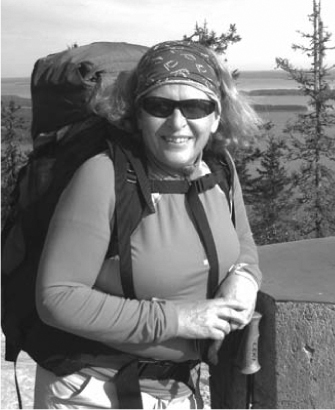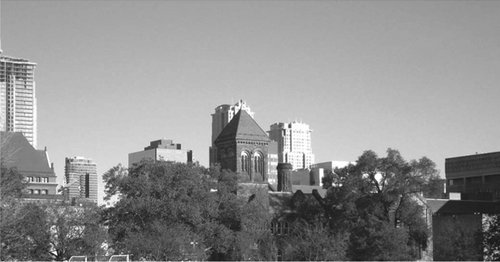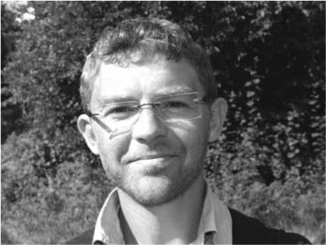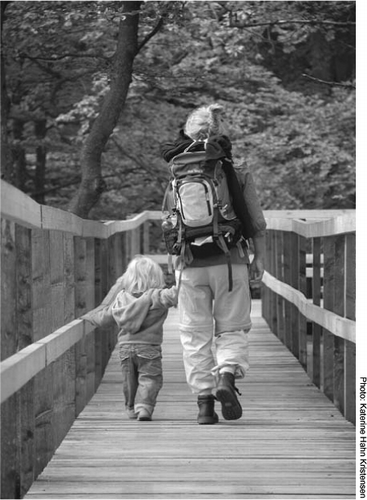Urban forestry – where trees meet people
The Nordic countries have taken a leading position in European urban forest research, partly with the support of the SNS. CARe-FOR-US is now halfway through its second five-year period, and continues to bring together relevant forces in Nordic and Baltic regions.
The “Nordic–Baltic Centre of Advanced Research on Forestry Serving Urbanised Societies” originated in 2005, with Professor Cecil Konijnendijk van den Bosch as coordinator. In 2013, he was succeeded by Anders Busse Nielsen, who heads the research on urban forestry at the Swedish University of Agricultural Sciences in Alnarp.
Anders Busse Nielsen highlights the mission to provide decisionmakers with scientific support for the important role of urban forests.
– Our competence is needed more than ever. Green urban planning is, nowadays, not a naive wish on the part of NGOs, but a necessary tool in the hands of city planners, he says.
Rapid urbanisation
We know that urbanisation is a continual process, and people move into cities at a fast rate. Today, 85% of the Finns and Swedes, and 87% of the Danes live in urban areas. Urbanisation in Sweden is, in fact, the fastest in Europe, according to a report from Eurostat in 2012.
The dilemma for planners is to provide housing for all these people without sacrificing the environment. This is not easy to solve, and there is often conflict between those who advocate urban densification and those who want to preserve all existing trees. But the two do not need to be at odds, says Anders Busse Nielsen.
– Smart planning can preserve green structure and still allow more houses to be built. Green corridors, such as have been planned in many major cities in the Nordic countries, may give many people access to forest and the chance for wildlife to move without barriers.
Strategic urban planning has not only become important for society, but has also emerged as a research field. Anders Busse Nielsen has observed a shift in urban forest research from reporting single case studies to research with a broader grip on the issue.
– Our strategic research can now be transferred into policy recommendations, he hopes.
A growing field
The concept of urban forestry is rather new. It reached Europe in the 1980s, inspired by activities in the USA. But it is only during the last decade that it has become an established research discipline.
– When Cecil Konijnendijk defended his PhD thesis in the late 1990s, he was among the first in this field in the Nordic countries. It is different today, with about 6–8 PhD students working on areas related to urban forestry just at SLU in Alnarp, says Anders Busse Nielsen.
The PhD projects cover a broad range of disciplines, including biodiversity, climate change, forest management, governance and human health. The span of research also illustrates the interdisciplinary character of the field.
– This is what makes urban forestry so appealing, but also so demanding. We need to focus not only on how to get trees growing in artificial environments, but also on how they relate to people, how people relate to them, and how they affect the urban environment.
Integrated approach
Urban forestry is, thus, not a specific research field, but a field that involves cooperation across disciplines, from policy-making, economics and social science, to technology and biology.
One question is whether this integrated approach spills over into basic education. Anders Busse Nielsen's opinion is that the students at SLU still have a lot to learn before they are able to work in a more interdisciplinary manner.
– Landscape architects need to learn much more about forest, and foresters must better understand social values. Urban forestry is a discipline that deals as much with people as with trees, he says.
Ecosystem services
Trees in urban areas constitute only a small proportion of the total forest in the Nordic countries. Why care about this small amount of wood?
Anders Busse Nielsen argues enthusiastically about the importance of the green spaces in densely populated areas.
– The urban forest covers a small area, but it is extremely important in terms of ecosystem services. The urban forests deliver air and water purification, temperature stabilisation, recreational experiences and health enhancement. All these services are essential for sustainable urban development.
Today, we have firm evidence of the important contributions of trees to all these ecosystem services. Furthermore, people enjoy being in wooded streets, parks and urban woodlands, and the mix of diverse trees species enhances biodiversity in the cities.
Bringing new ideas
The management of urban forests differs in many ways from traditional forestry. Many new technologies and planning strategies have to be developed to handle the particular urban conditions. Experiences gained in this context can also have applications for the management of production forests. Anders Busse Nielsen gives some examples:
– The public's role in planning is essential in urban forestry. We can now see growing concern for public opinion with respect to other forests as well. The process of involving people in the cities provides valuable experience that can also be applied in rural districts, he says as the first example.
Public preferences are very important in urban areas – people need to like the forests. Techniques for maintaining continuous cover forestry, management of the field layer and so on, developed in urban forestry, may be applicable to traditional forestry
A third example is the role of urban trees for monitoring and detecting new pathogens. Introduced pathogens that reach us via global trade often occur first in the cities. Examining damage to trees in parks and other urban situations helps us to detect pathogens, and possibly to combat them, before they become a major threat. Phytophthora damage on beeches was, for example, first detected in a park in Malmö, Sweden.
– If the emerald ash borer does show up in the Nordic countries, it will probably be observed first in urban trees, he forecasts.
About CARe-FOR-US
Cares for the urban forests
Although urban forestry is a relatively new concept (see previous article), SNS was early to envision its importance. In the 1990s and early 2000s, the first networks were supported in the field.These networks provided a basis for the pan-European COST-action E12 “Urban forests and trees”, coordinated from Denmark. One of the outcomes of the COSTaction was a screening of urban forest research in Europe. It turned out that Nordic countries occupied a very strong position in the field, with 108 out of 404 listed research projects. The analysis also showed that research was often fragmented and suffered from limited resources compared to the actual needs. In order to reach a critical mass of research, forces had to be combined.
CAR started 2005
The establishment of CARe-FOR-US (Nordic-Baltic Centre of Advanced Research on Forestry Serving Urbanised Societies) in 2005 was a natural continuation of the cooperation already initiated. The first period, lasting till 2010, included a more thorough survey of research needs, seminars, joint project applications, education and training. The second period, 2011–2015, continues the work to be a catalyst for urban forestry research. The research topics identified during the first period were used to select four prioritised research themes, which also illustrate the breadth of the field:
European perspective
One of the aims of SNS networks is to initiate research cooperation in a European context. CARe-FOR-US has, in that respect, been successful: it is one important partner in the imminent EU-financed project GREEN SURGE, in which 24 partners will work on green structure planning and biological (and cultural) diversity in urban environments.
Conferences
The CAR arranges international conferences. A conference in Tartu, Estonia held this October, focused on urban forestry in transition. A major conference on urban tree diversity is planned to take place in Alnarp, Sweden, in 2014 (see www.urbantreediversity.com). The conference is being arranged in cooperation with the International Society of Arboriculture, and is expected to attract some 300 researchers from all over the world.
Courses
Courses for PhD-students are important for the CAR. To date, there have been few such courses in urban forestry, but several have now been held or are planned, often together with NOVA (the Nordic Forestry, Veterinary and Agricultural University). Examples of the subjects covered include urban tree diversity, science communication in landscape architecture, and forest governance.
Read more about CARe-FOR-US, and download reports from: www.nordicforestresearch.org – browse for SNS research, CAR.
Contact: Anders Busse Nielsen, coordinator ([email protected])
Shortcuts
Nordic cooperation in 2014 – green growth, welfare and music
Iceland will hold the presidency of the Nordic Council of Ministers in 2014. The Iceland's programme has three focus projects, based on the core values of Vigour and Vitality.
The first project, Nordic bioeconomy, is of high relevance for SNS. Its key emphasis is green growth combined with sustainable development. The project strives to find ways to utilise our natural resources better, whether they are found in the air, on land or at sea. The programme underlines that biomass is an underutilised resource.
The other two projects are Nordic Welfare Watch, which will shed light on the resilience of the Nordic welfare state, and Nordic Playlist, which will assist in the promotion and export of Nordic music.
Read more: www.norden.org, search for Vigour and vitality
National forest programme needed in Sweden, says Forest Agency
The Swedish Forest Agency has delivered a feasibility study on the needs of a national forest program to the Swedish government. The agency concludes that Sweden needs a national forest programme. The program can contribute to a better common understanding of the role of forests in society, and the sectoral responsibility can be further clarified.
– A national forest program can especially give the opportunity to create a comprehensive long-term strategy for how the forest can be used, says Director- General Monika Stridsman in a press release.
Read more: www.skogsstyrelsen.se, search for “Meddelande 5 2013” (in Swedish)
A need to harmonise social indicators for recreation and tourism
According to the SNS- and EFINORD-supported network “Social indicators in forestry” there is a lack of standardised social indicators among North European countries, at least for the studied topics recreation and tourism. This makes it difficult to compare trends over time and between places.
Nature-based recreation and tourism bring important benefits to society, both in terms of health and regional development. It also contributes to social sustainability, one of the main pillars for sustainable development.
Northern Europeans, and particularly people in the Nordic countries, greatly value outdoor recreation. National surveys show that 76 to 91 percent of the adult population in Denmark, Sweden, Norway and Finland visit forests annually

Statistics and other assessments of recreation and tourism provide tools to aid in their future development, but monitoring demands robust indicators. A previous study showed that most European countries lack indicators that can be compared across time and regions. Further on, Forest Europe social indicators are not well reported. This were the driving forces behind the network “Social indicators in forestry”.
Lack of comparable statistics
Almost all participating countries in the study (Denmark, Estonia, Finland, Lithuania, Northern Germany, Northwest Russia, Norway, Scotland and Sweden) were able to report a set of indicators related to nature-based recreation and tourism, but only a few indicators appear to be applicable to all countries under current conditions.
Most countries have a serious shortage of data to provide quantitative figures for social indicators that can give information about on-going changes, although there are some attempts to include recreation in established inventories. Denmark has included it in the National Forest inventory, and Finland, Denmark and Scotland have national outdoor recreation demand inventories.
The next step
In all countries in the study, there is a need to develop monitoring systems to produce inventory data for recreation statistics that will provide a knowledge-base for indicators that are comparable across Europe.
Read more: www.nordicforestresearch.org, browse for Social Indicators in Forestry (network N 2013-06).
The report “Social Indicators in the Forest Sector in Northern Europe – A Review focusing on Nature-based Recreation and Tourism” is published in TemaNord, TN 2013:584, www.norden.org
Contact: Tuija Sievänen, Metla [email protected]
Examples of national social indicators of recreation
Estonia – investments associated with recreation activities in state forests
Finland – participation in outdoor recreation by the whole population and different age groups
Northern Germany – value of forest-based recreation
Norway – proportion of population living only a short distance from green areas
Scotland – proportion of adults visiting the outdoors once or more per week
Sweden – proportion of the population living less than 300 meters from an area of nature




